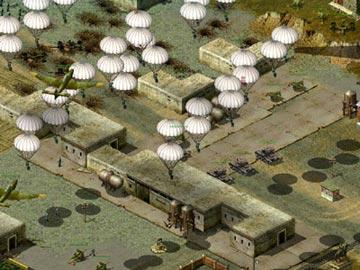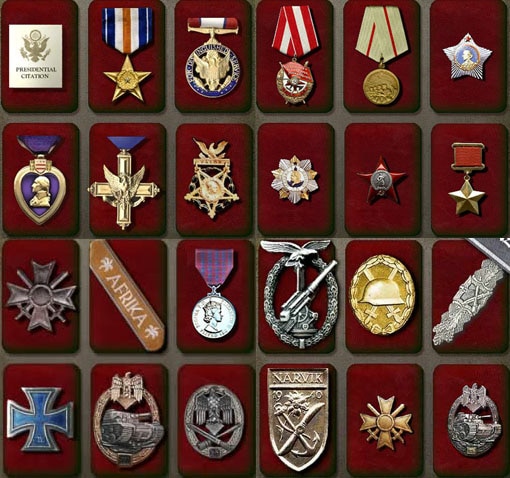Blitzkrieg: From Russia with love.
Introduction
Blitzkrieg is not an unheard-of game. It was a huge hit on release and continues to be a popular RTS to this day, beloved for it's variety of units and fast, intuitive combat. A close rival, Sudden Strike, was released around the same time and was actually published by the same publisher, CDV. CDV is renowned for their catalogue of classic RTS games, one of which has been reviewed here: American Conquest. But why is Sudden Strike and American Conquest not as fondly remembered? What did Blitzkrieg do differently? And what secured Blitzkrieg's place in the RTS hall of fame?
All about Blitzkrieg
Blitzkrieg, if you hadn't guessed already, is an RTS set during WW2, offering 3 playable factions: Germany, Allies (UK and US) and the USSR. There are other factions which you cannot play as but fight against, like the Japanese. Blitzkrieg's campaigns are ones we have seen many times before; Europe, North Africa and the Pacific. With single missions offering more unique frontiers like the Mongolian-Chinese border. Blitzkrieg gaves players a massive arsenal of over 200 unique units, and 70 historical mission. Players can conquer their foes with artillery, air support and armour.
How does it play
If all of that sounds too similar to every other WW2 RTS, the gameplay will certainly change your mind. This game is about combat and combat only. There is no resource management, construction (apart from bridges) or tech-trees. The game gives you some units and occasional reinforcements - you have to make do with what you are given. The only aspect that resembles resource management is supply depots, which must be captured so your supply wagons can refuel and rearm troops and vehicles.

Comparisons could be made to Sudden Strike, but this game has a much larger scale. Sudden Strike gives you the ability to micromanage every single unit, like letting them crouch, prone, run or throw grenades. Blitzkrieg still offers room for micromanagement but it is no where near as tedious. Instead the game offers large, almost cinematic battles, though still keeping a semi realistic sense of scale. The real draw of this game is how battles are won. Much like in real life, artillery decides the outcome of a battle. Artillery in Blitzkrieg isn't just a magic button that has a cooldown, they are actual units with massive range that can shell an opponement endlessly as long as they are consistently resupplied. Every time artillery fires, they leave a blip on the map, which doesn't pin-point them exactly, but gives the enemy a vague idea of where to fire counter-artillery.
Air support is another important factor in deciding the outcome of a battle. You can request ground attack planes, recon planes, fighter planes that attack all enemy aircraft, bombers and paratroopers. These can all be countered by stationary and mobile anti-air guns. Air support opens up a lot of opportunities for devestating attacks; most commonly a recon plane spotting enemies and artillery firing at them. Paratroopers can be used to quickly neutralise smaller armies and artillery, though this is quite risky and more often than not ends in a massacare if not proprerly reconed.
In the campaigns, units can gain experience by destroying enemies, and if those units survive, they will be carried over to the next mission with improved stats. This incentivises the player to keep their more stronger units alive as they can become really useful when upgraded late in a campaign. Courageous deeds don't go unnoticed, and if you execute a mission with minimal casualities, or inflict many casualties on the enemy, you will be awarded with actual medals that were issued during the war.

Technically speaking, the game plays great. Convienent hotkeys for every move, responsive units that dont ignore orders, and the ability to 'bookmark' units using the number keys. The easy to use unit management system is a real blessing and makes the game, as the title implies, fast. Pathfinding is good for the most part, but there are some issues when towing or unloading artillery - sometimes the truck will not tow the gun at all, or unload it further away than where you sent it too.
Enemy AI is quite smart and they will utilise structures and unmanned guns to take you down. They use air support alot too, and just one enemy bomber raid can wipe out your entire army if you keep them all close to eachother. For example, during one mission, I ordered my entire army to cross one bridge and the AI called bombers to destroy the bridge, leaving my army in ruin. It was annoying of course, but also great to see a game actually punish you for making stupid mistakes.
Mission Variety
For a strictly combat orientated RTS, there is a surprising amount of mission variety. Whilst it is true that are alot of them are simply conquest missions, there are a good amount of missions that change the formula and prevents the game from getting stale. One mission tasks you with protecting a T-34 tank factory from waves of Germans, but the twist is the factory will actually produce tanks every so often, which you can use for the defence or counter attack. Letting even one German in the factory will fail the mission. Another mission gives you a unique 'spy' unit, that must be sent to a German encampment to pick up another spy. This unit can bypass most enemies without being killed so it makes for a great scout. Some missions have more factions, like the Italians and Vichy French, which can be destroyed, or they can surrender, giving you extra units.
There are a few missions that are more tactical than others, like the paratrooper missions. In these missions, you can not get reinforcements or air support, or even artillery. Instead, you must capture enemy AT guns and artillery and move carefully across the map. These missions, whilst extremely challenging at times, are some of the most fun in the game, providing a great sense of achievement after completion. Some missions require you to destroy certain structures and units, my personal favourite being destroying trains. Trains in this game actually move and can be incredibly useful for transporting large amounts of troops and vehicles. The Soviets even get an armoured train, decked out with machine guns and cannons, and the Germans get their infamous railway gun.
Historical Accuracy
Blitzkrieg is pretty accurate, and whilst its hard to make out details on soldiers because of the games simple graphics, the vehicles are brilliantly recreated, troops actually speak their own language and the mission briefings provide a plethora of historical context. There is probably some minor inaccuracies that I haven't noticed, because no game is 100% perfect, but even if there was, it never breaks immersion. You still feel like you are in a WW2 battlefield. Compare that with some more recent games like CoD Vanguard, where even the most history illiterate people can see it is complete fantasy. Overall, this game is faithful and nothing ever feels out of place.
Modding Scene
The modding scene for this game now is small and not paticularly active, however you must remember this game has been out for 21 years, thus having 21 years worth of mods. There is however a lot of custom maps, as the game also comes with a scenario editor. Maps and mods cover a wide range of conflicts and are generally made extremely well. They cannot be found on Steam workshop, but there are dedicated websites just a Google search away.
Immersion
For an RTS game, the immersion is pretty good. As mentioned before, units speak their own languages and they actually run out of ammo. Placing troops in wooded areas lowers the visibility, making ambushes actually worthwhile. It can also help with retreats too. Huge artillery batteries firing in coordination with eachother is probably the most impressive thing this game has to offer, as the whole environment is destructable. You can barrage entire cities in this game with not only artillery but bomber planes, which leaves an immense trail of destruction. Sometimes by the time the mission has finished, there literally is no city left.
Flaws
There isn't many flaws in this game, and the ones that are present are not gamebreaking by any means, but it is only fair that they are mentioned. Keys are not rebindable at all, which isn't as a big an issue as it is in American Conquest, because the fixed bindings are actually decent, with the main functions using WSAD. Like most old games, the Steam version doesn't launch properly, or at all. And even on the GOG version, there are some resolution issues, like trying to change to 1920x1080 just doesn't work. This doesn't bother me that much, but what does bother me is that there is no zoom function, which is absolutely needed in a game of this scale. The only other big issue I can think of is towing artillery, which is a pain due to it's sluggishness and hit or miss path finding. There are some players who think the path finding for all AI in this game is bad, but I guess it's subjective and personally I didn't have any major issues.
Conclusion
This game holds up remarkably well and is leagues better than the newest Sudden Strike, which its self is not a terrible game, but no one is going to remember Sudden Strike 4 in 20 years. What makes this game stand out is its ability to be accessible, yet incredibly indepth at the same time, making the game fun for casual and hardcore players alike. It's current price of about £5 on GOG, which includes 3 expansion packs, makes buying this game a no brainer for any classic RTS fan looking for a fun challenge, and it makes for a great introduction for those just getting into the RTS genre.








